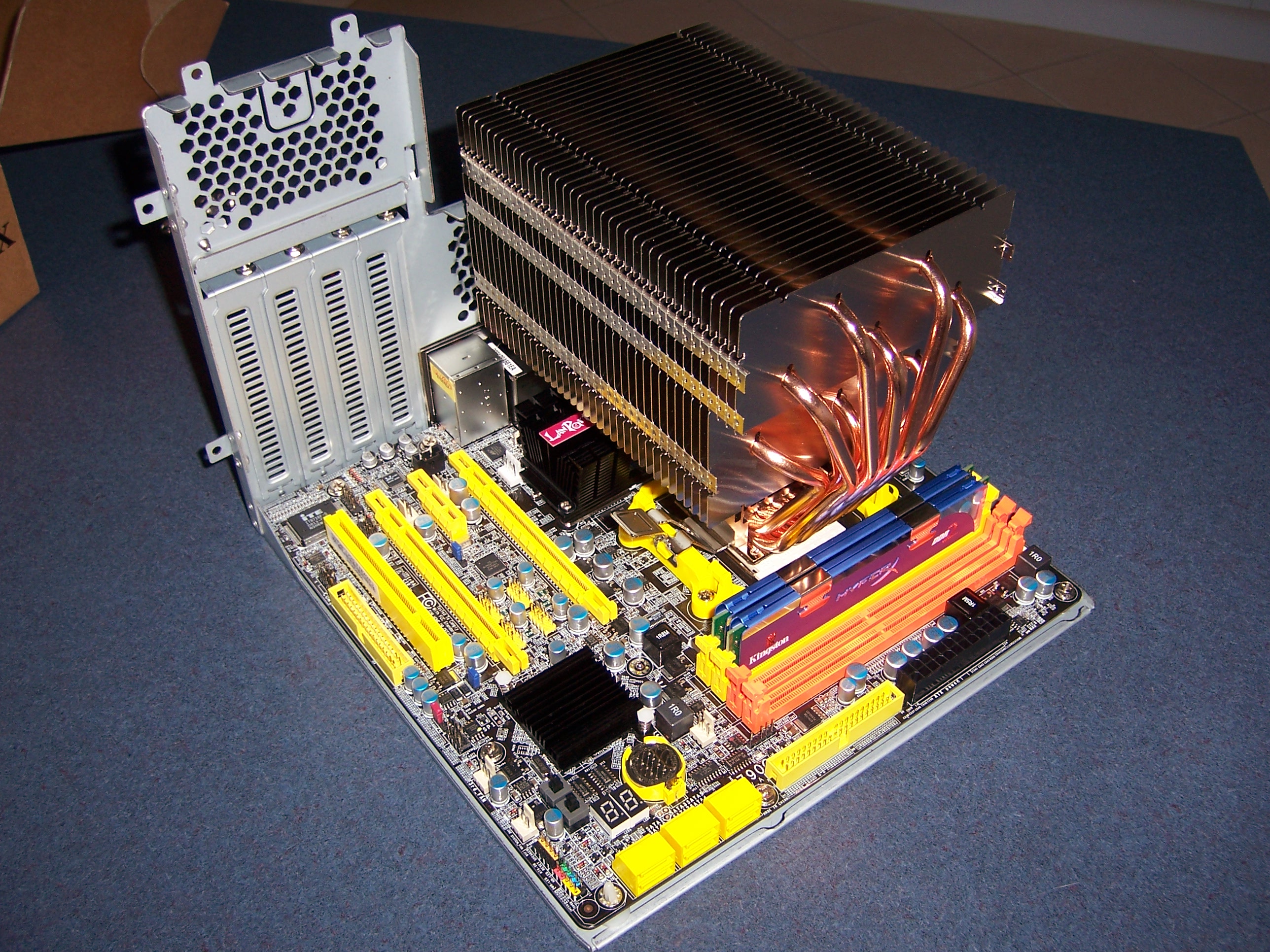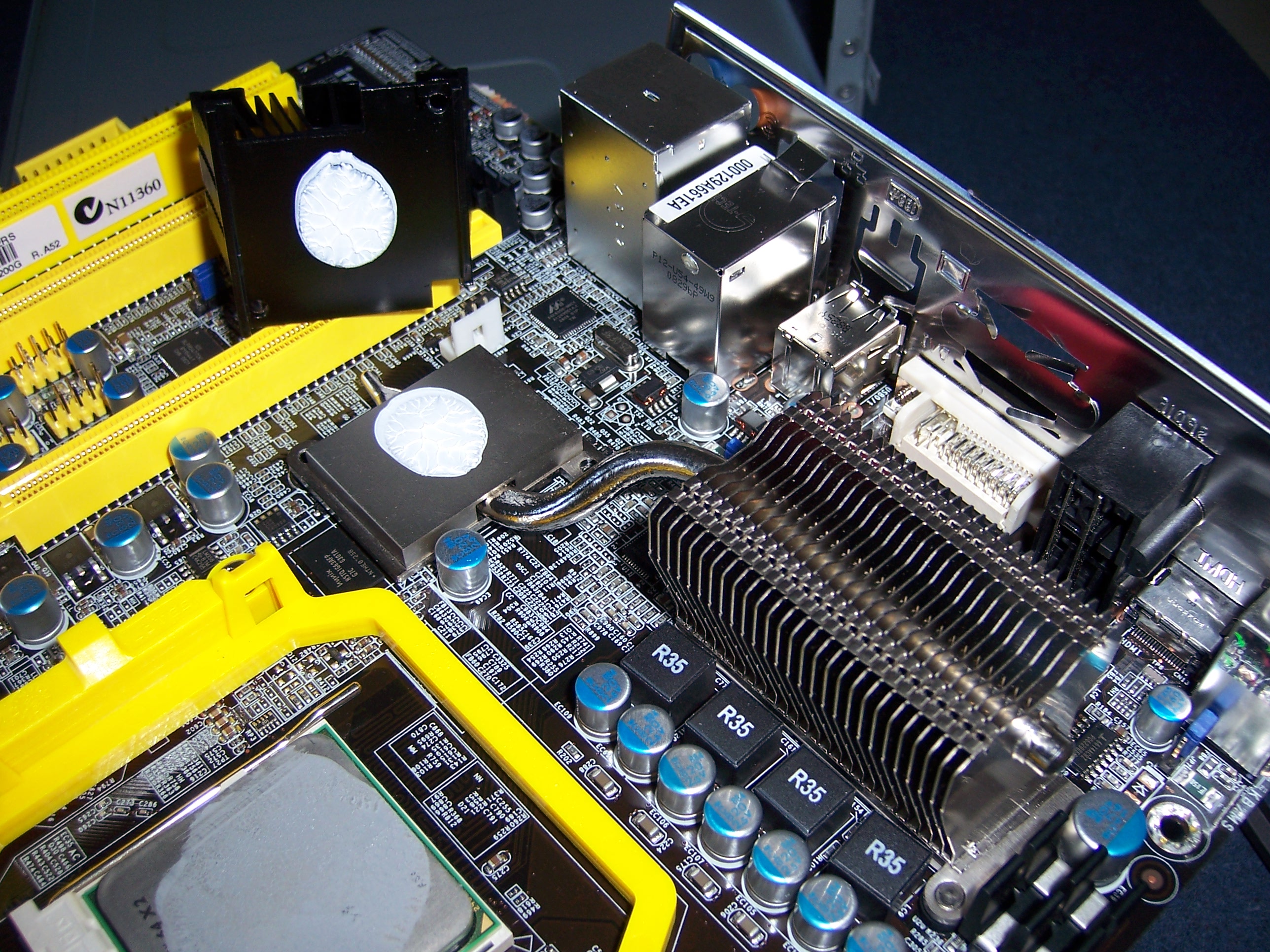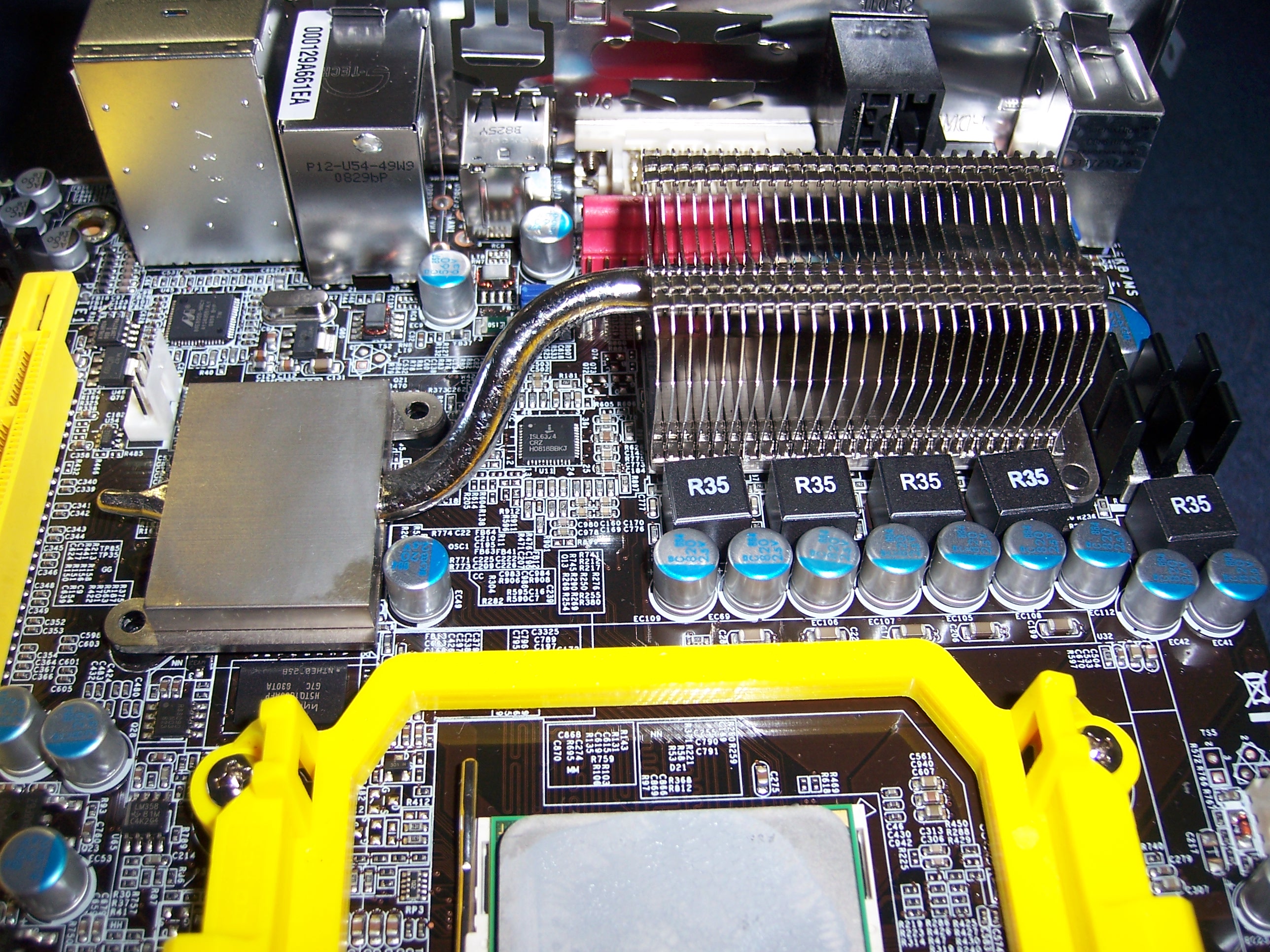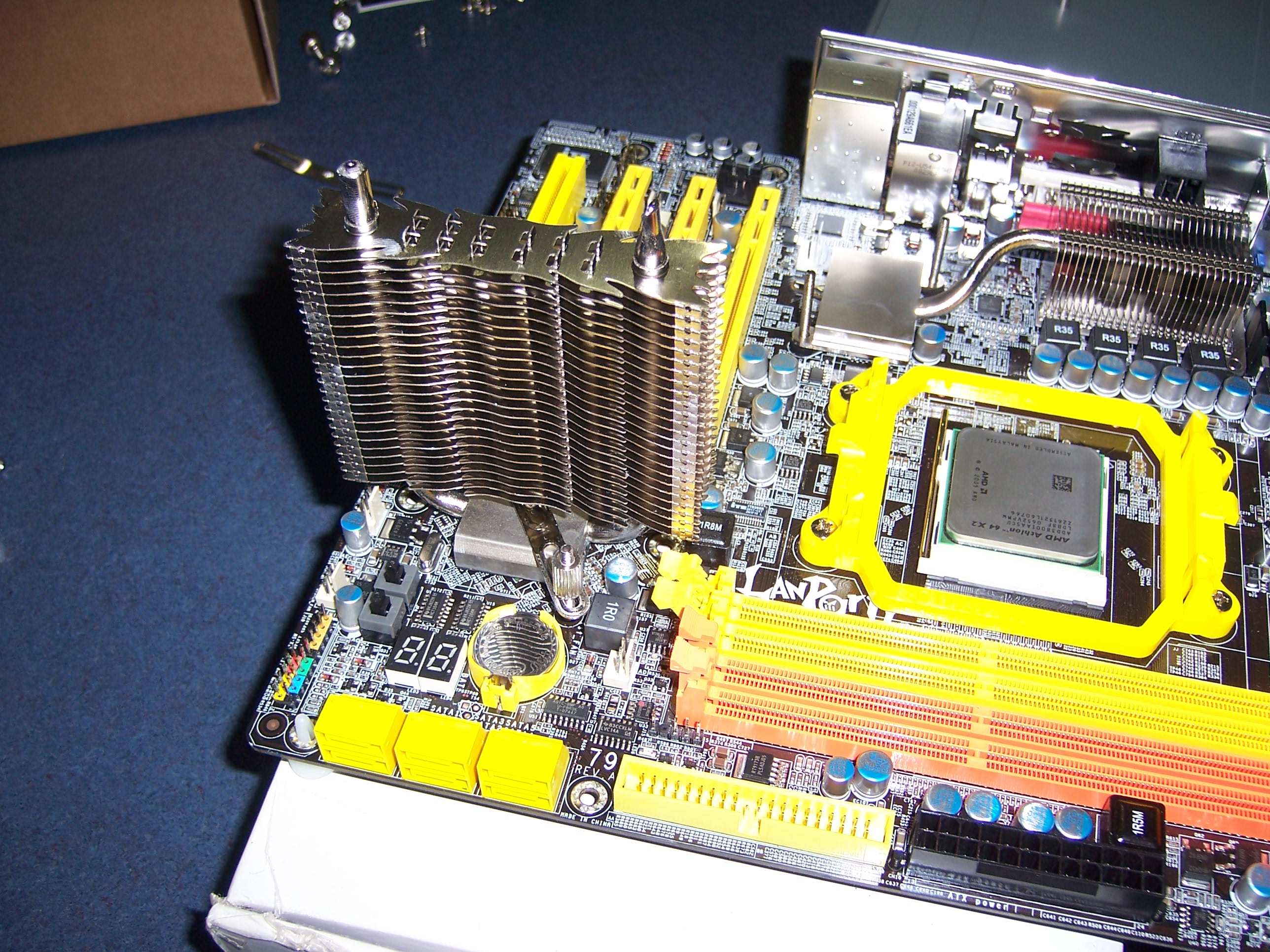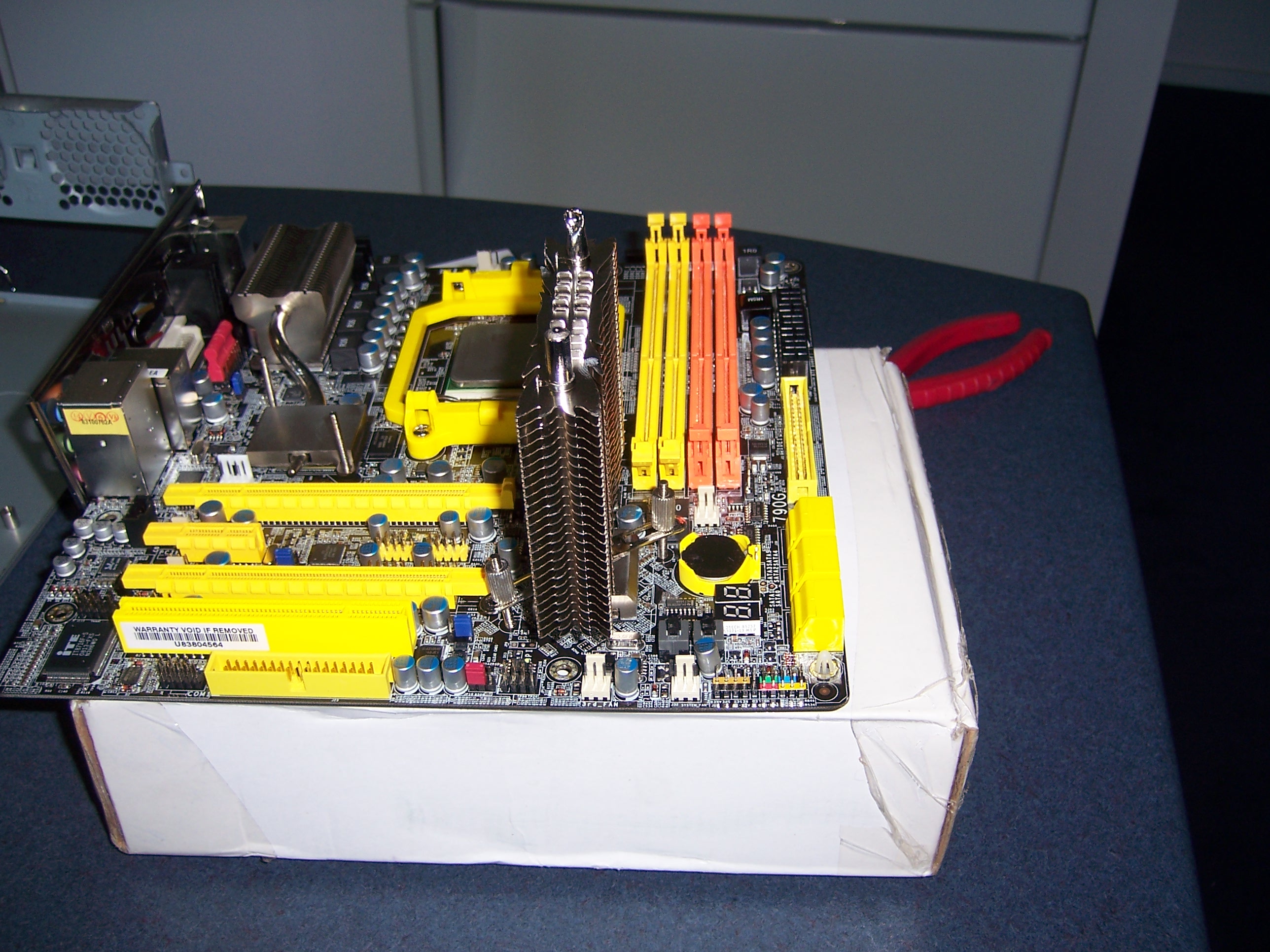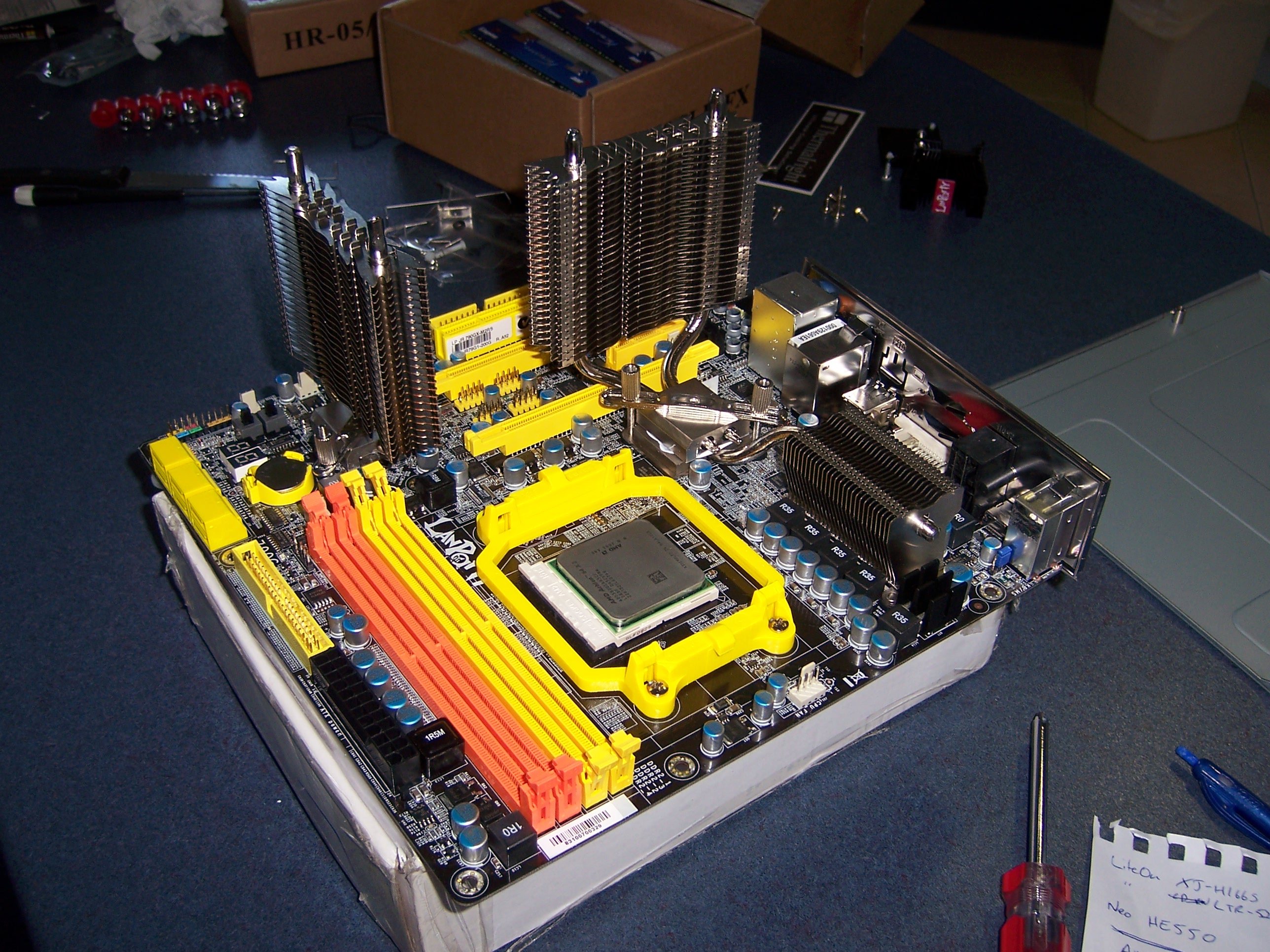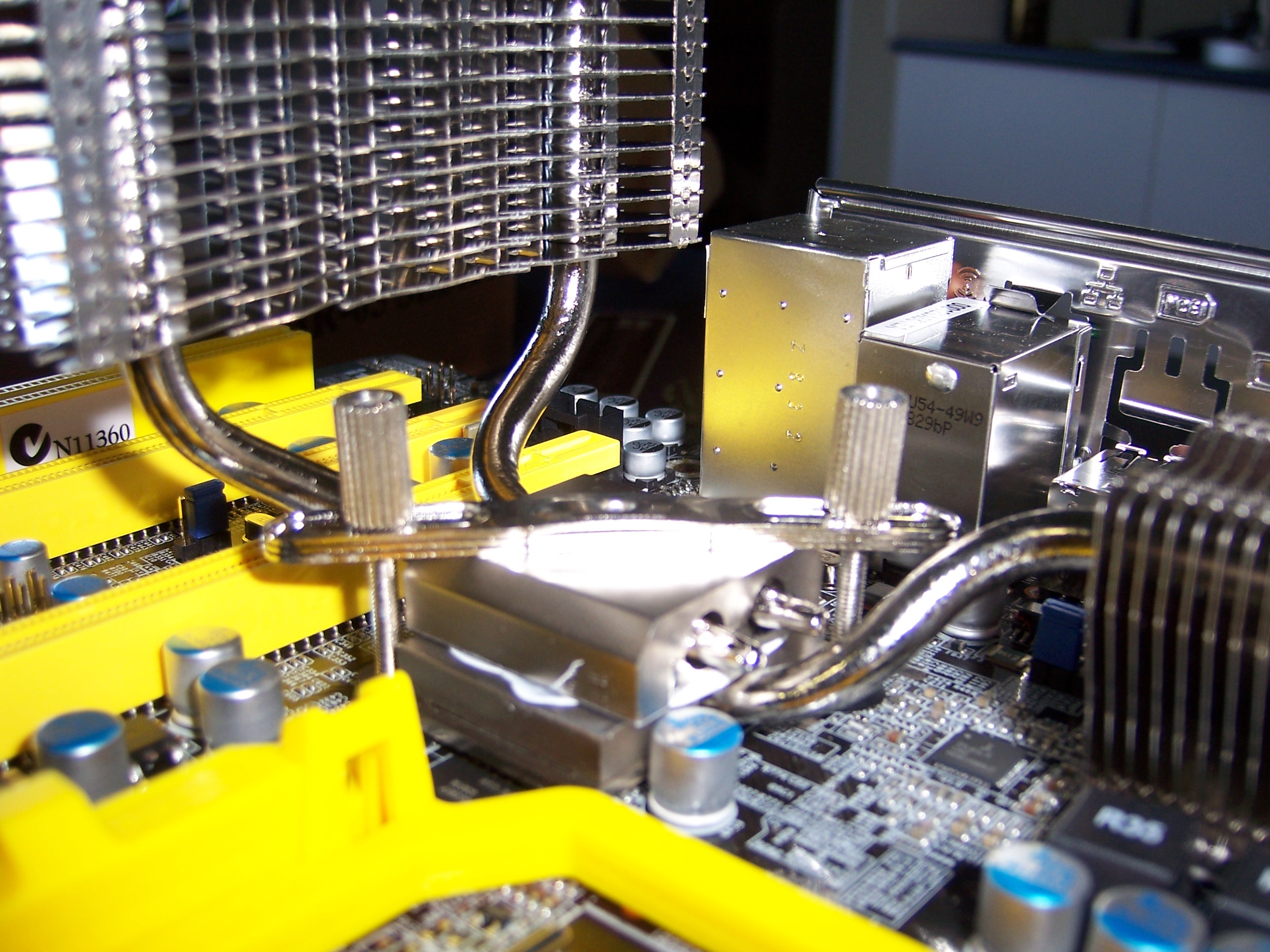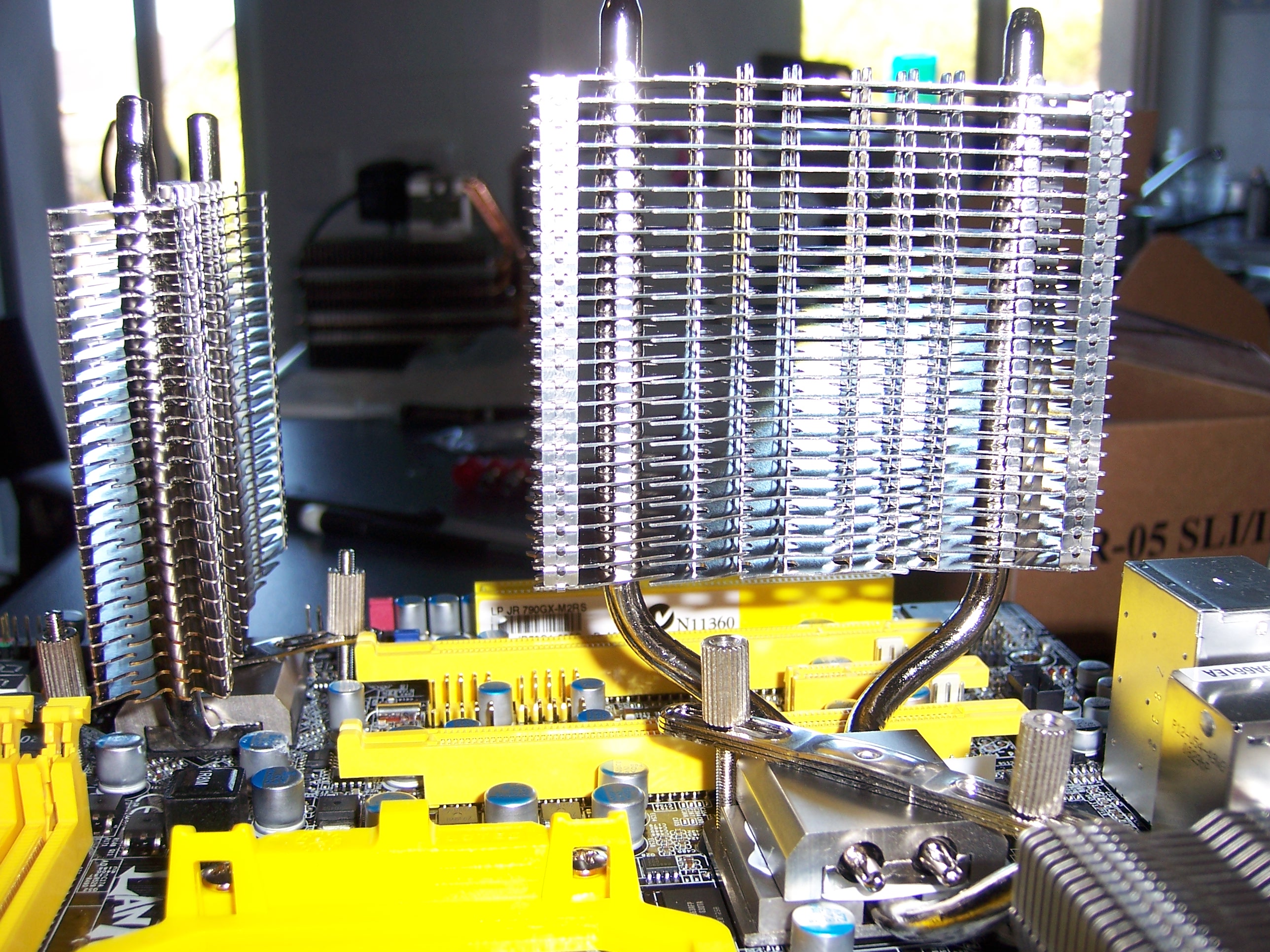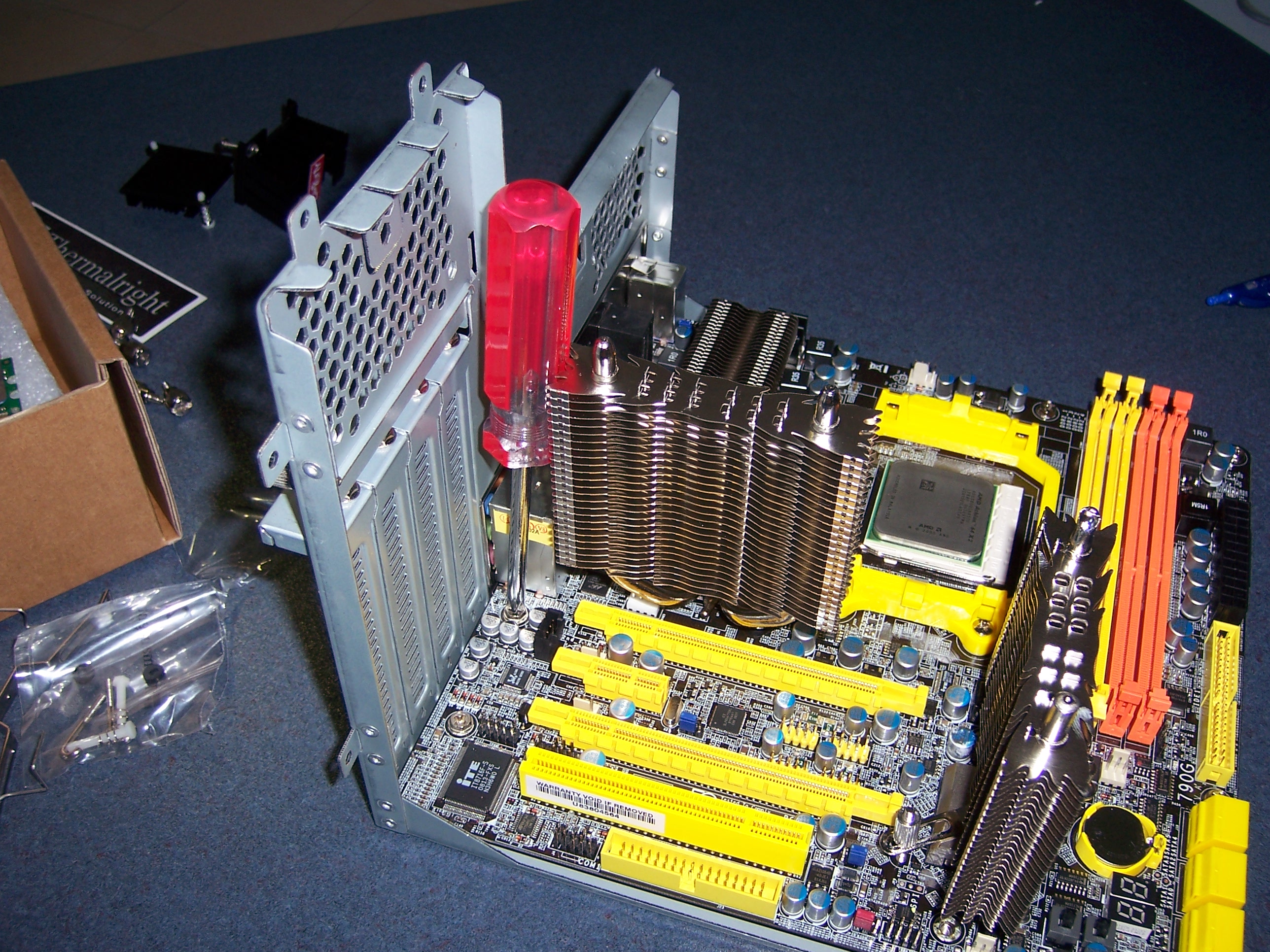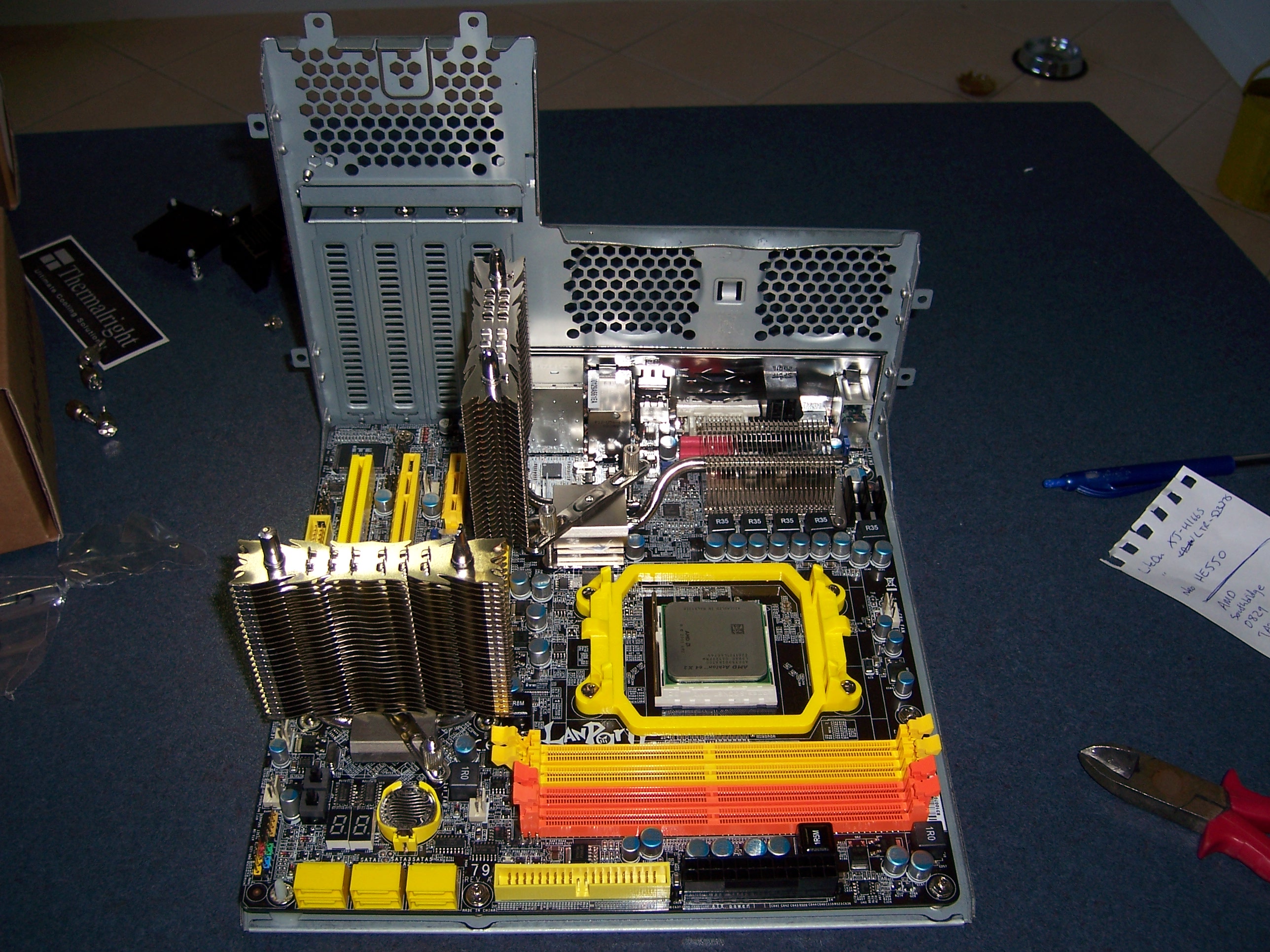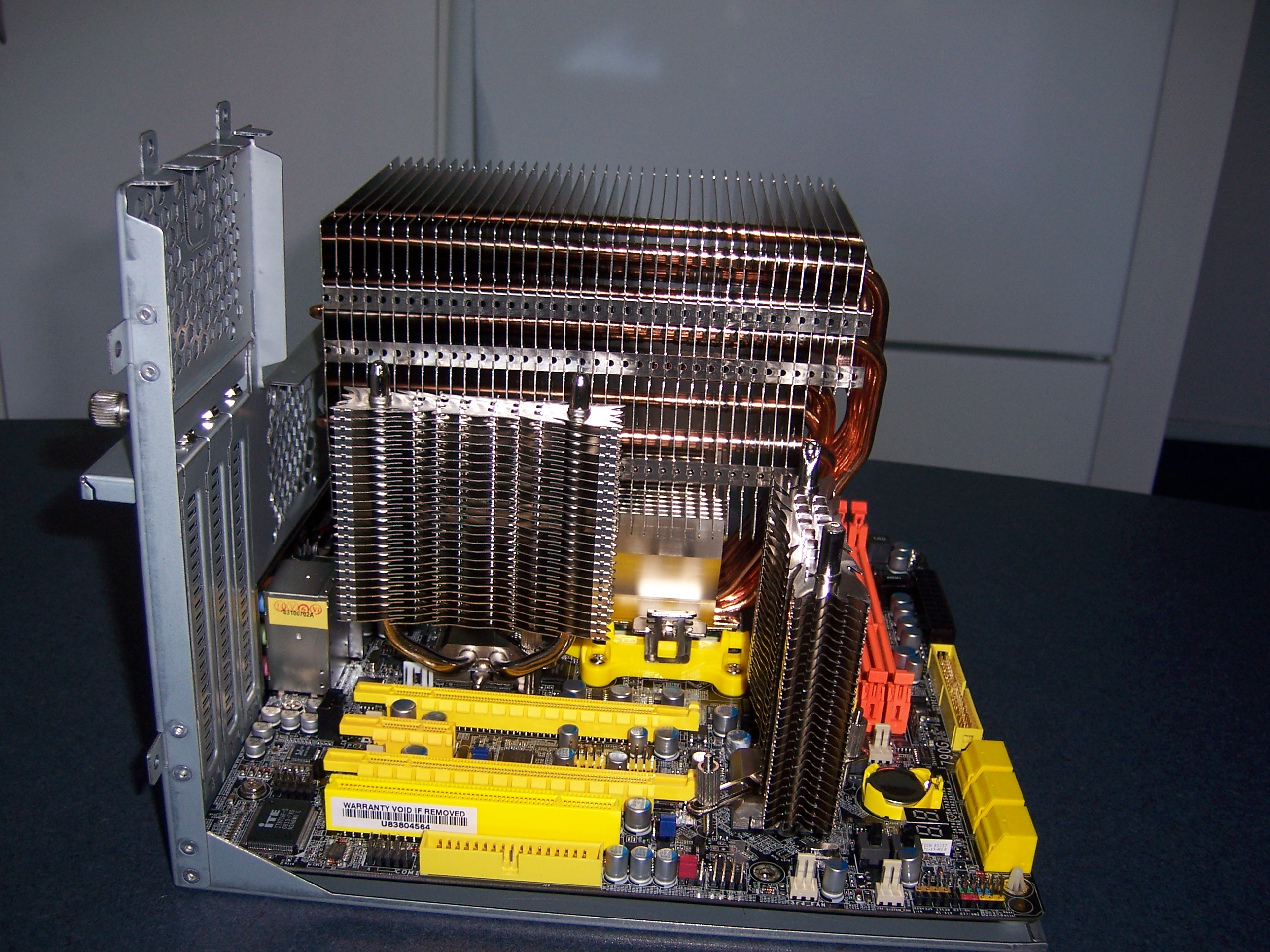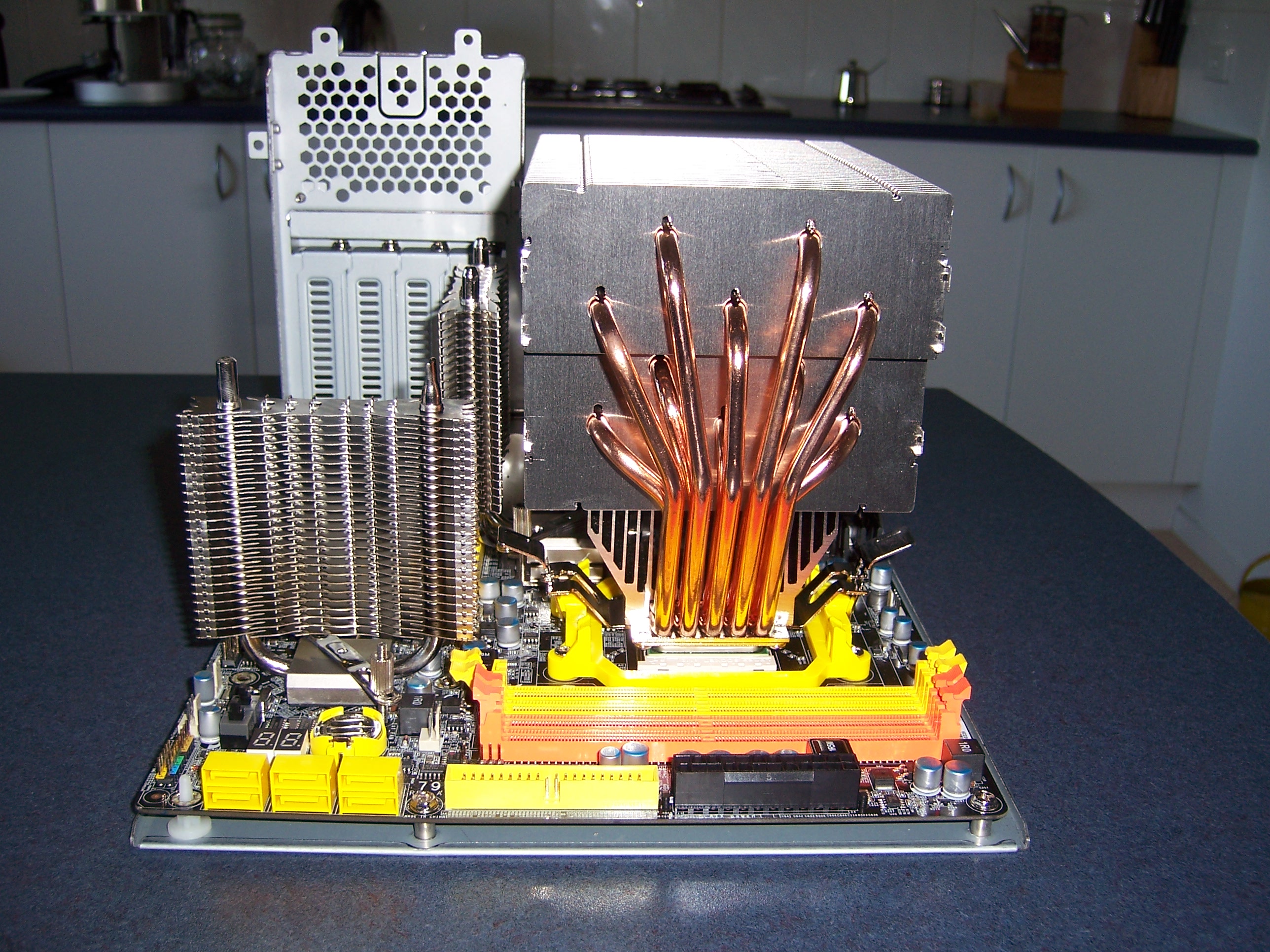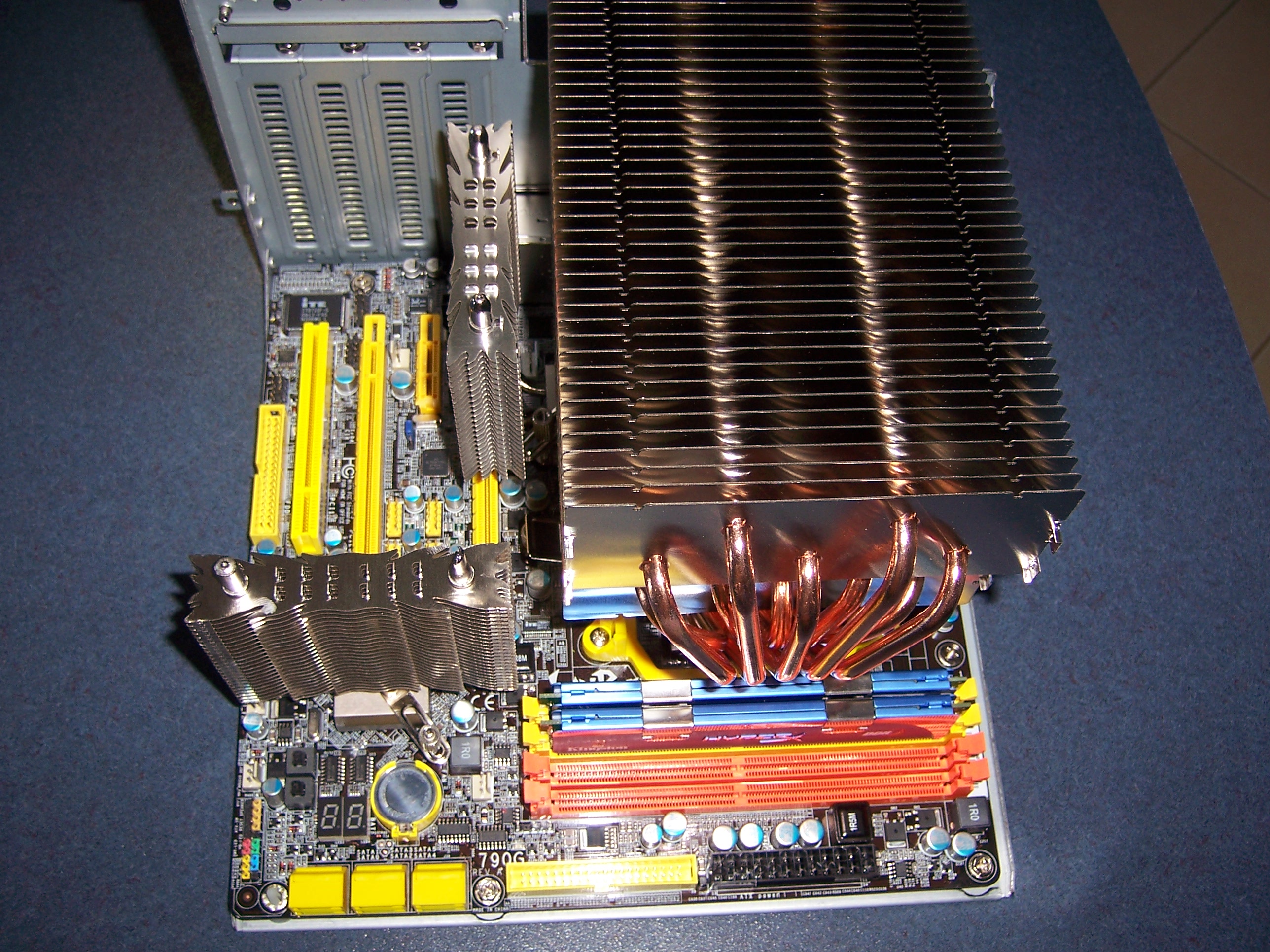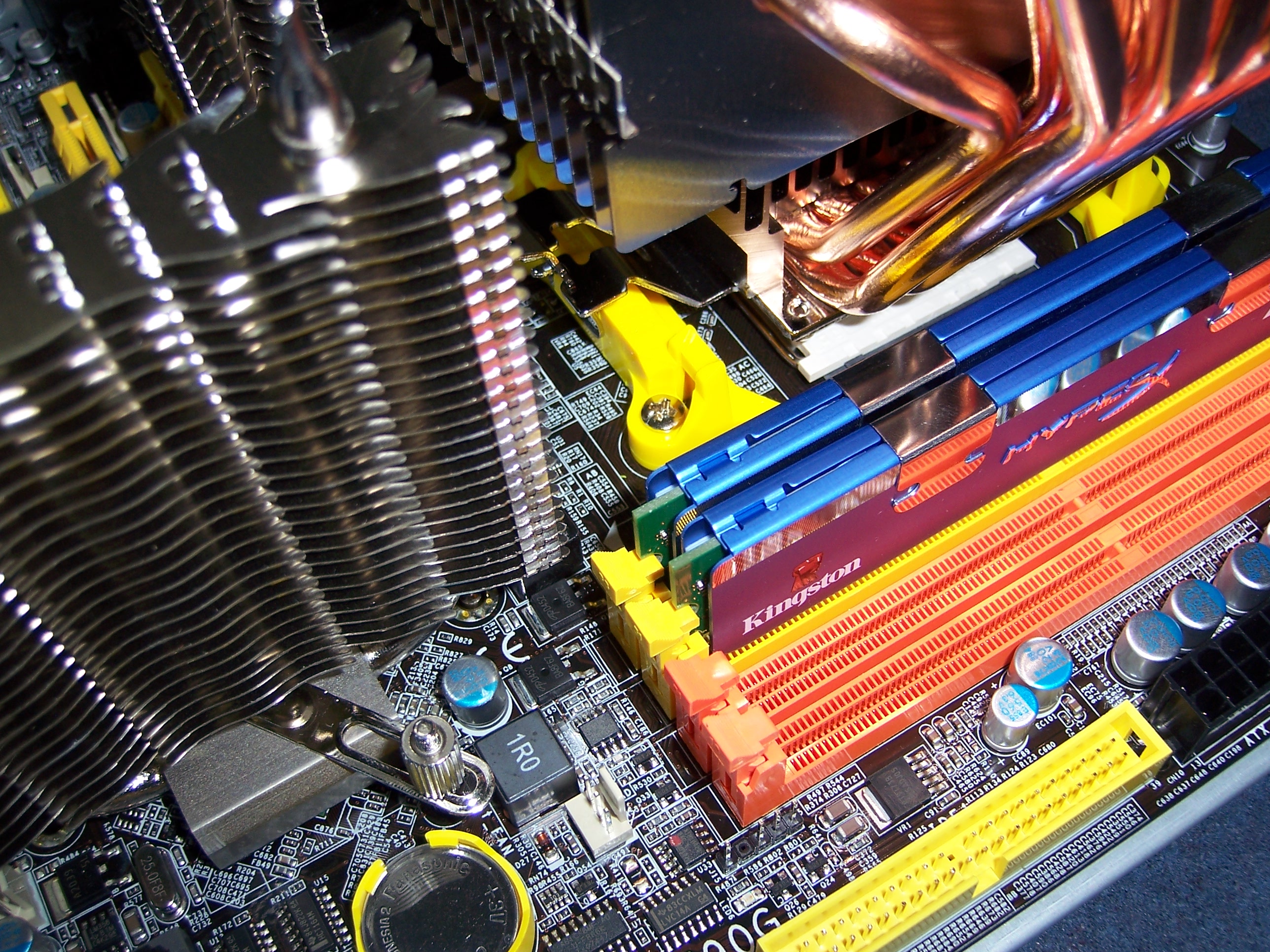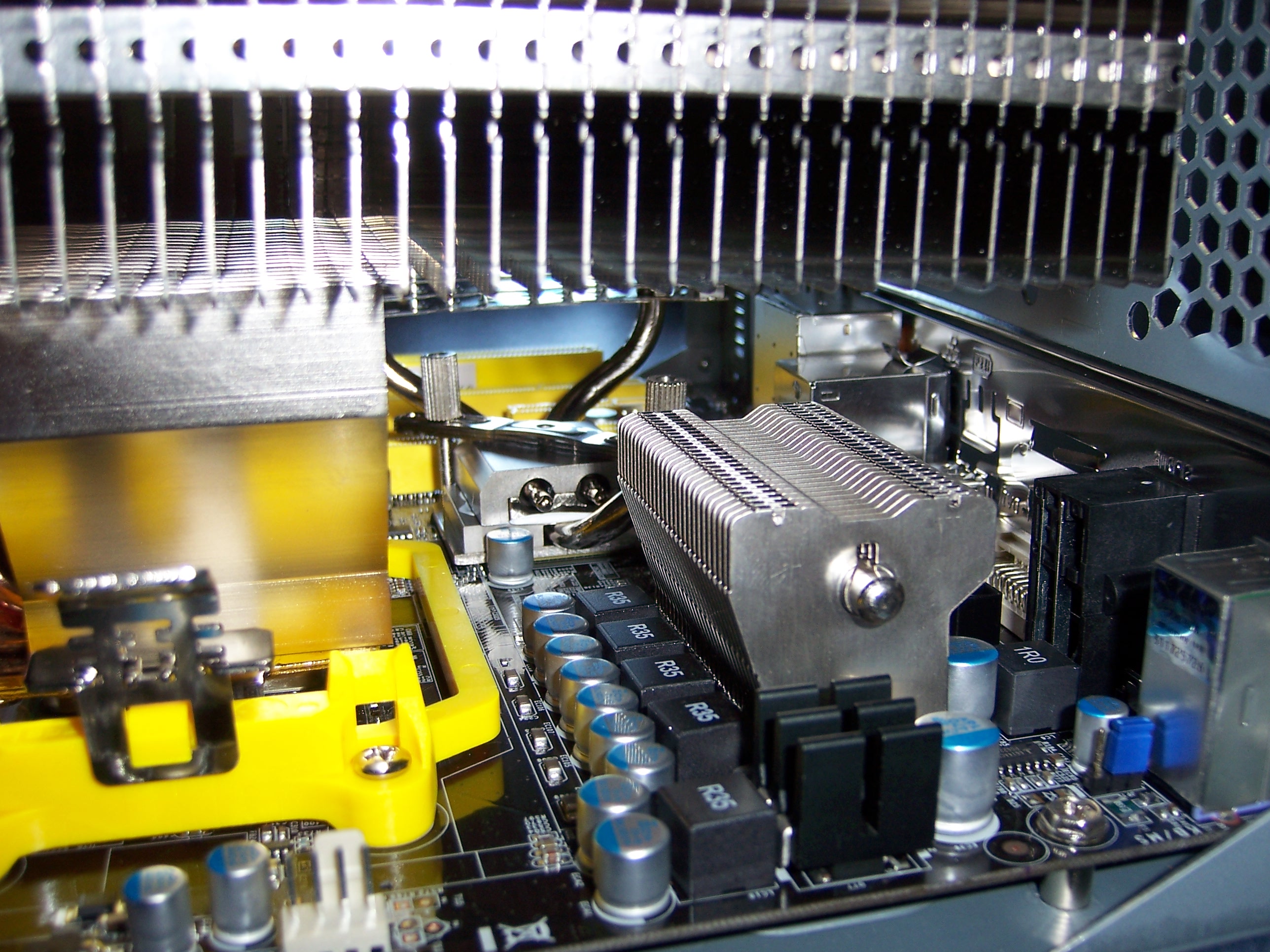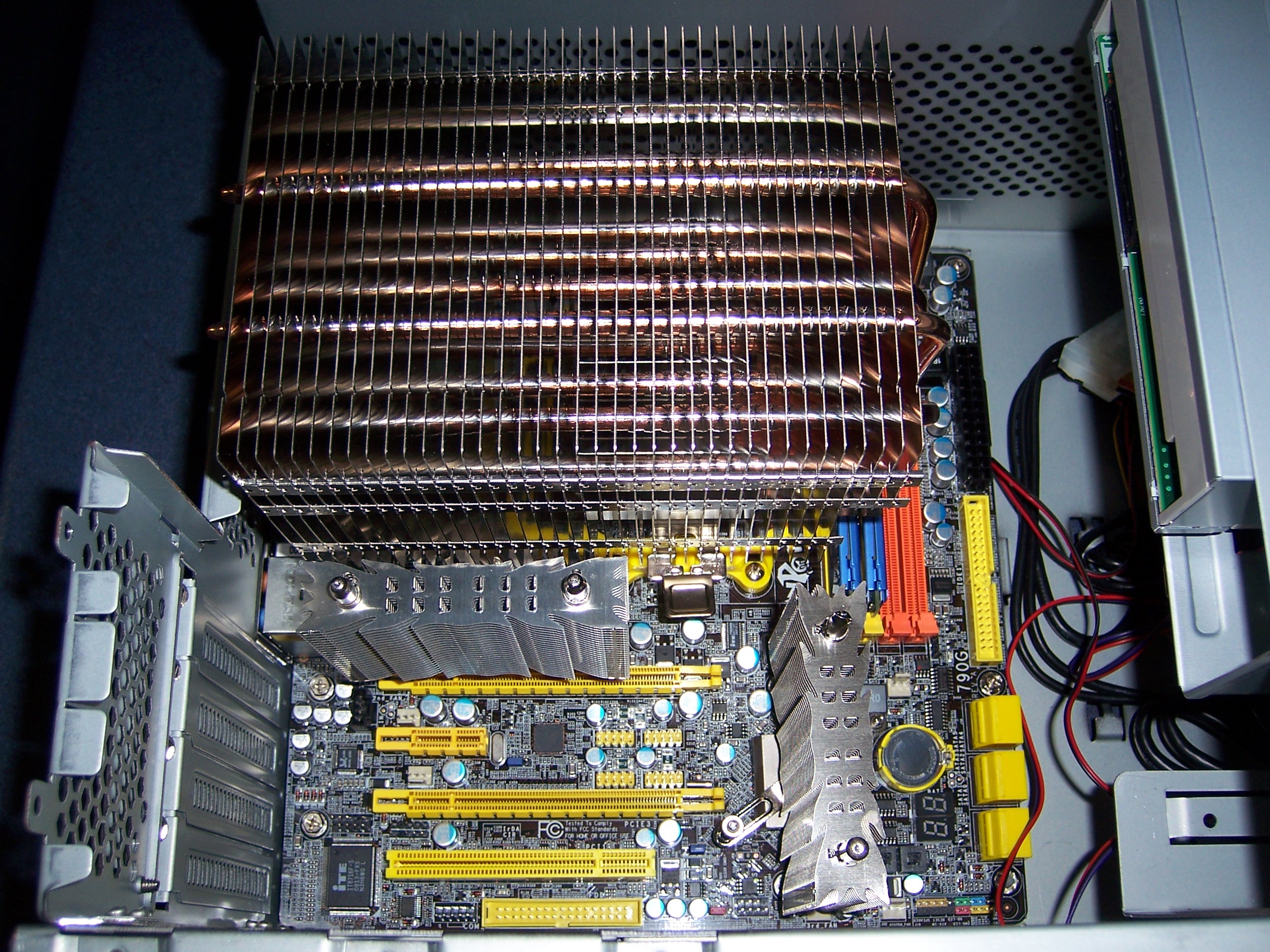Solid State Media PC build: Part 2
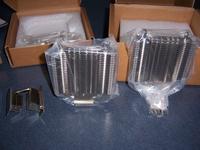
Back in part 1 of this build, I ran in to some overheating concerns with the northbridge. So I decided to try a passive tower cooler for both the north and south bridges.
So here's the new parts that are ready to go... From left to right, they are:
- Thermalright HR-09S (type 3) VRM cooler... which I didn't end up using (more on that later);
- Thermalright HR-05 IFX chipset cooler - this is the straight-up version, which I'll use for the southbridge;
- Thermalright HR-05 SLI IFX chipset cooler - the "bent" version for the northbridge.
So, just quick reminder, he's what it looked like at the end of part 1.
Ok, so having removed the good old Orochi, the northbridge heatsink came off next. This required the removal of two small 5mm nuts (and breaking a small bit of thermal paste).
As you can see, beneath the northbridge's passive heatsink, there is a solid aluminum block. This block happens to be attached (irreversibly?) to the heatpipe. I was considering removing it, but decided two keep the block for two reasons:
- I needed the extra height clearance for the HR-05 to clear the PCIe slot; and
- I decided not to change the VRM heatsink (more on that next), which meant that the heatpipe had to stay.
As far as the VRM heatsink goes, I was considering replacing the stock heatsink. However, it was immediately clear that none of the HR-09 "types" would fit except for the "type 3" - all of the other types are, in fact, too long. So I ordered an "type 3" (they're pretty cheap) to try, but once I'd removed the northbridge heatsink, it became clear that the existing VRM heatsink makes much better contact than the "type 3" would. This is because the existing heatsink is wider than then "type 3" (indeed, wider than all of the HR-09 models). In addition to that, the existing VRM heatsink is very well attached, using a thermal adhesive (kind of like double-sided tape) - which I was not confident in breaking (had it been bolted down instead of "adhered", I would have removed it for a better look anyway). So, in the end, it would be better I believe to keep the existing VRM heatsink - so I did.
The southbridge heatsink was next to go.
In case you're wondering, the AMD southbridge is labeled:
0829
TAIWAN
PA7530.00
<serial number>
Oh, and the existing southbride heatsink used those dodgey platic / nylon clips - easy to remove with a small pair of pliers.
Ok, now that all of the original heatsinks are out of the way, let's add the first HR-05 tower - this one's for the southbridge.
It turns out that the HR-05 could fit comfortably in either orientation, with both obscuring motherboard connectors in some way. I choose the orientation you can see above, because it caused the least problems - specifically, it makes the motherboard's third fan connector ("3rd_FAN") and "Download Flash BIOS" header a little harder to reach (don't need either for this project). Whereas the alternative orientation not only blocks out one PCIe×16 slots (PCIE 3), it also imposes on the PCIe×1 slot (PCIE 2), and make all of the internal USB connectors very difficult (if not impossible) to access.
So I was quite happy with the orientation shown above :)
And now for the northbridge:
Of course, the Orochi meant that we were only going to be able to use this heatsink in one orientation. Although it's not obvious in these pictures (you can kind of see in the first one) the HR-05's heatpipes obstruct the first PCIe×16 slot (PCIE 1), which is sacrifice I'm very willing to make. And, as mentioned above, if the aluminum block that holds the VRM heatpipe to the northbride was not present, then the HR-05's heatpipes would not be high enough to clear the PCIe×16 slot, which would have left me with a bit of a problem. But, as it turned out, I had to keep that aluminum block for the VRM heatsink anyway, and so it worked out very nicely :)
You may also notice in the middle photo that I've used two of the cross-bars to attach the HR-05 to the northbridge. The HR-05's are shipped with two or three of these (with some slight difference between them), and so I decided to use two here to allow me to keep some higher pressure on the heatsink... obviously something to be careful doing, but I didn't get too heavy-handed with it ;)
Now to return the motherboard to the base plate - a nice, snug fit.
You can see in the first photo that there is just enough room to fit a screwdriver for the rear center mounting screw. However there are two mounting screw positions left unused - one on either side of the southbridge... the HR-05 tower completely obstructs them. Of course, that shouldn't be a problem if all other mounting screws are in, but worth noting anyway.
Ok, so let's see all three towers together... ie, bring back the awesome Orochi!! :)
Nice :) You can see how the northbride's HR-05 tower clears the Orochi... the clearance is not huge, nor would I want it to be, and yet it's quite a comfortable clearance, with not chance of accidental contact.
That photo may make you wonder about the clearance between the southbride's tower and the RAM...
Not a problem... as you can see, there's adequte, though not huge, clearence for the DIMM slots' retaining levers (incidentally, that's my favorite photo from the project so far).
Here's a couple of photos showing the VRM heatsink's clearance under the Orochi.
That's a decent bit of clearance, which is quite appropriate for a passively cooled system.
And finally, the quick aerial photo showing how all of these towers fit inside the Thermaltake Lanbox HT chassis.
As you can see, the towers all have good clearance. And I can still use all but one of the expansion slots - as long as I'm very careful, and don't use any really long cards (but then a passively cooled system like this should use a few add-on cards as possible... I intend to use none).
So, that's it for part 2 ;)
Stayed tuned for part 3, where I'll be installing an OS or two, and running some actual thermal tests, which hopefully won't show any major issues (fingers crossed).


